Thaumatophyllum bipinnatifidum (formerly Philodendron selloum syn. P. bipinnatifidum)
The philodendron houseplant is such a reliable old friend, and so commonplace, that you might tend to overlook it in favor of more remarkable species.
But then along comes the tree philodendron, sometimes called lacy leaf, split leaf, or horsehead philodendron, a species that’s so large and bold you can’t help but take notice. It goes by various other common names as well, including panda or fruit salad plant.
As an aside, while we’re on the topic of names, this species is actually no longer classified as a philodendron, according to the botanists who are experts in taxonomy. We’ll get to that a little later in the article.
It has vast green, glossy, heart-shaped leaves that are deeply lobed, with cuts so deep they reach almost to the center vein of the leaves.
If you’re looking for a plant that makes a statement, that can anchor an oversize room or complement a blank wall, this could be the one for you.

We link to vendors to help you find relevant products. If you buy from one of our links, we may earn a commission.
This plant is easily confused with another jumbo-size, bodacious tropical, Monstera deliciosa, which also has divided leaves and grows to be big and tall.
But those Swiss cheese plants may also have enclosed holes on their leaves, while T. bipinnatifidum has the deeply cut lobes only.
In USDA Hardiness Zones 10 to 13, this foliage plant will grow outdoors year-round, either in large containers or planted in a garden or border.
Its tall stature is tree-like, and plants will commonly lose their bottom leaves, leaving the central stalk exposed.
Here, I’ll cover ways to grow and care for tree philodendron indoors, or as a potted specimen that spends the warm months outdoors and the rest of the year inside.
Want to grow this big, bold beauty in your own home? I have plenty of tips to help yours thrive, from propagation to taking care of pests and preventing disease.
Here’s the lineup:
What You’ll Learn
What Is a Tree Philodendron?
Native to southern Brazil and the regions of Argentina, Bolivia, and Paraguay that are nearby, tree philodendrons are tropical.
Outdoors or in the wild, they can grow in excess of 15 feet tall with an upright habit, and spread 10 feet or more.
Mature plants, often of at least 20 years of age, may also produce flowers in the wild. But these are minute, covering a spadix that is protected within a spathe before it blooms, like what you will see on anthuriums and peace lilies.
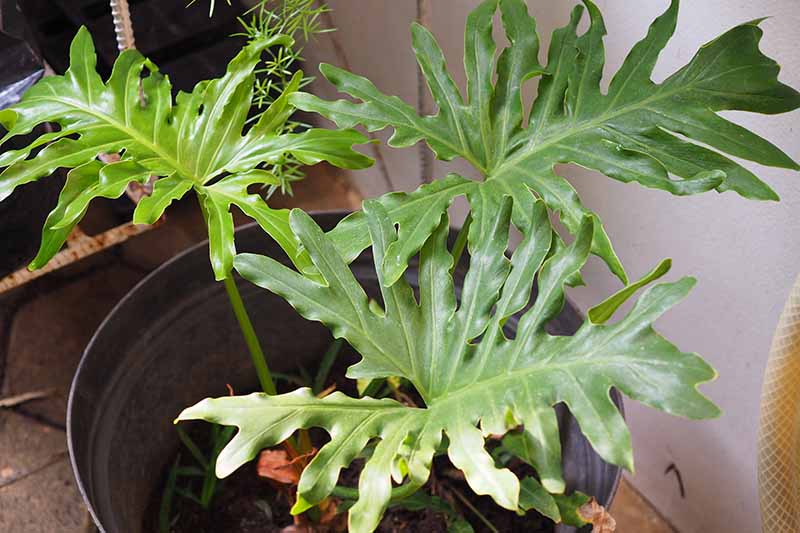
Indoors, the plants can still reach eight or 10 feet tall and spread six feet or more in ideal conditions, though you can limit this exuberant growth by planting them in containers no larger than 12 inches in diameter.
Vining philodendrons are typical, but T. bipinnatifidum was once categorized as one of the less common, “self-heading” types.
Members of the Meconostigma group of philodendrons, which have since been moved to their own genus, produce leaves that grow very close together, with all of them emerging from a single clump at the crown and no branching.
As they get older, these plants will develop a woody trunk that attains about four inches in diameter, and begin to shed their lower leaves as they grow taller, sporting leaf scars that resemble an eye with a darker pupil at the center where the foliage has fallen.
Some indoor gardeners think these trunks are unwieldy or unattractive. I like the offbeat appearance, but if you don’t, you can always limit the size of the plants before the trunks develop, merely by restricting the pots to 12 inches in diameter or so.
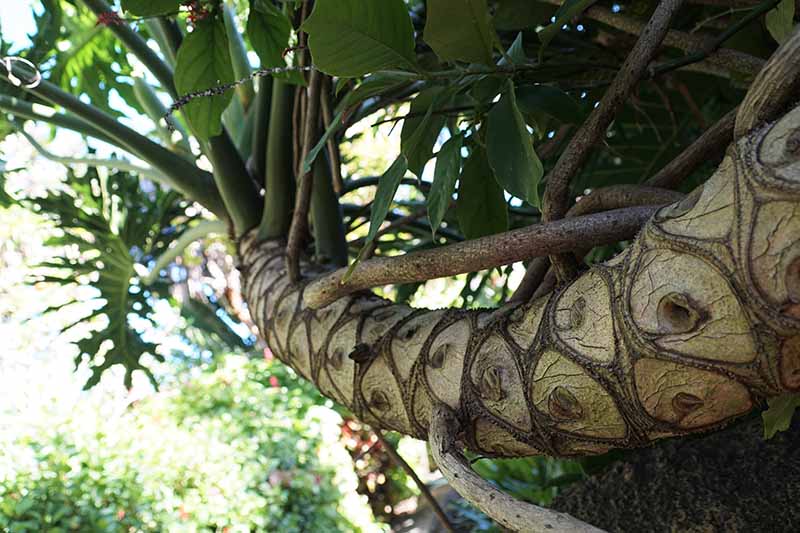
As self-headers, these plants also develop aerial roots that will grow from the long stem down to the ground. These roots support the plant as it grows taller, without taking in water or helping to provide nutrients.
Though this and other Meconostigma species are no longer considered philodendrons, you may still see their former botanical names in plant guides, and at nurseries and garden centers.
Philodendron selloum and P. bipinnatifidum were once considered separate species, as older specimens growing in the wild can look very different from their smaller indoor counterparts. These were merged when the two “different” species were found to be one and the same.
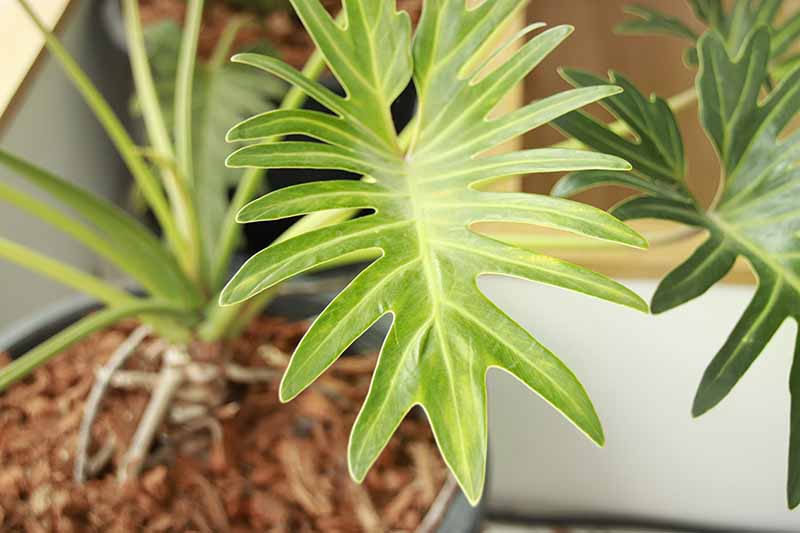
Later, DNA testing revealed significant genetic differences among the Meconostigma philodendrons that scientists decided were worthy of placement in their own genus, so this species was renamed T. bipinnatifidum in 2018.
If you want a tropical foliage plant that can attain an impressive size and that’s easy to care for, I don’t think you can do better than cut-leaf philodendron – or whatever you choose to call it.
Keep reading to learn more of the details that will help you succeed with this outsize houseplant.
A Note of Caution:
Like all philodendrons, Thaumatophyllum plants contain calcium oxalate, which is toxic if ingested.
If a pet or person ingests any part of the plant, they may experience symptoms including burning and swelling of the lips, throat, and mouth. vomiting, and trouble swallowing or breathing.
Keep these houseplants away from infants, toddlers, and inquisitive pets. If a human or pet eats some of the plant, seek medical attention immediately.
If your skin makes contact with the plant’s juices, you may experience itching and/or inflammation.
Propagation
The easiest way to get started with a tree philodendron is to purchase a plant from your local garden center or nursery.
If you or a friend has an existing plant, it is possible to propagate new plants via a stem cutting or by removing any offsets that appear at the base.
The leaves of this plant grow from one central stem, and provided there are leaf nodes and aerial roots growing from it, you can top the stem and plant that section in a container filled with well-draining potting mix.
The stump will eventually sprout new leaves.
If you notice offsets growing at the base of your plant, you can dig them up, roots and all, and repot them.
To do this is, remove the plant from its existing pot, and use a knife to separate the offsets from the parent. Pot them up using well-draining potting mix.
How to Grow
Like most of their close relatives, tree philodendrons can cope with less than ideal conditions, but they’ll grow better if their needs are met.
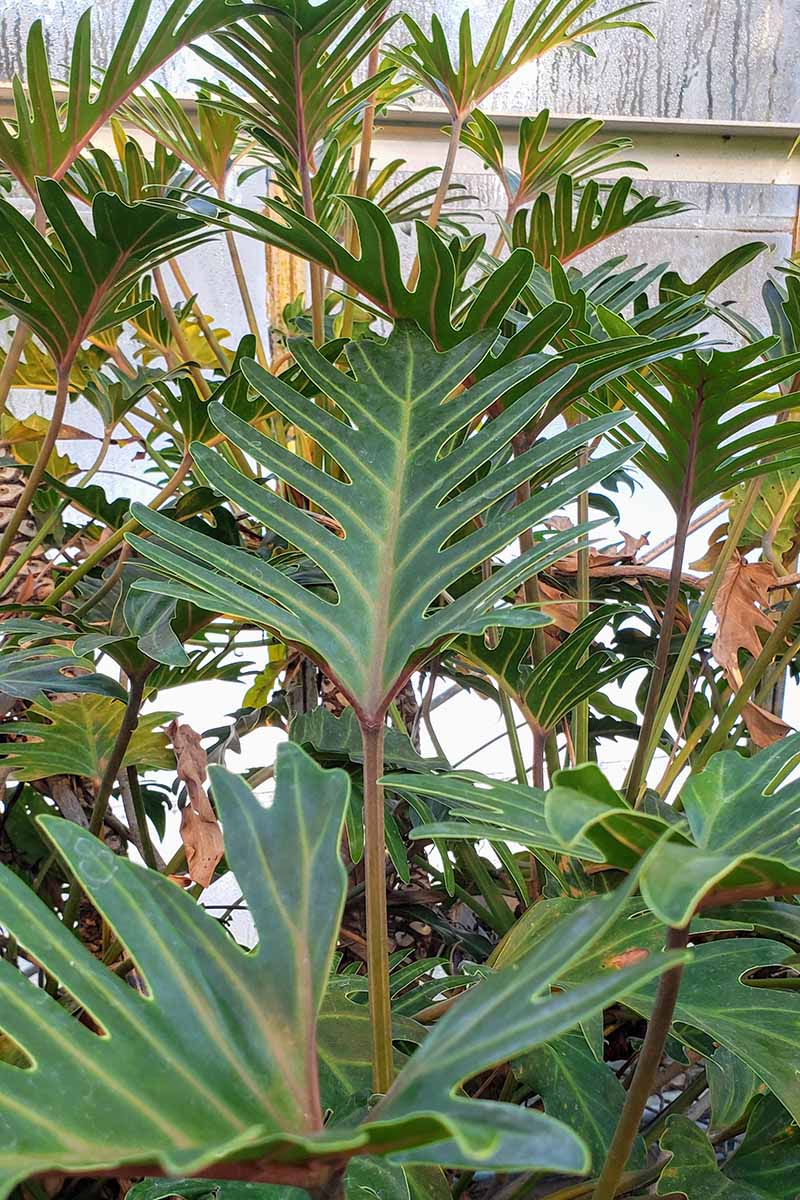
Here’s what to provide:
Lighting
These houseplants do okay in low light, or part shade when growing in pots outdoors. What’s novel about them is that they can also tolerate bright light, which is handy when you’re trying to find a location for them to thrive.
They’ll usually do just fine anywhere they can receive at least low light in your house, including bathrooms lit with 40-watt fluorescent bulbs, or other indoor spots with natural light from a north-facing window.
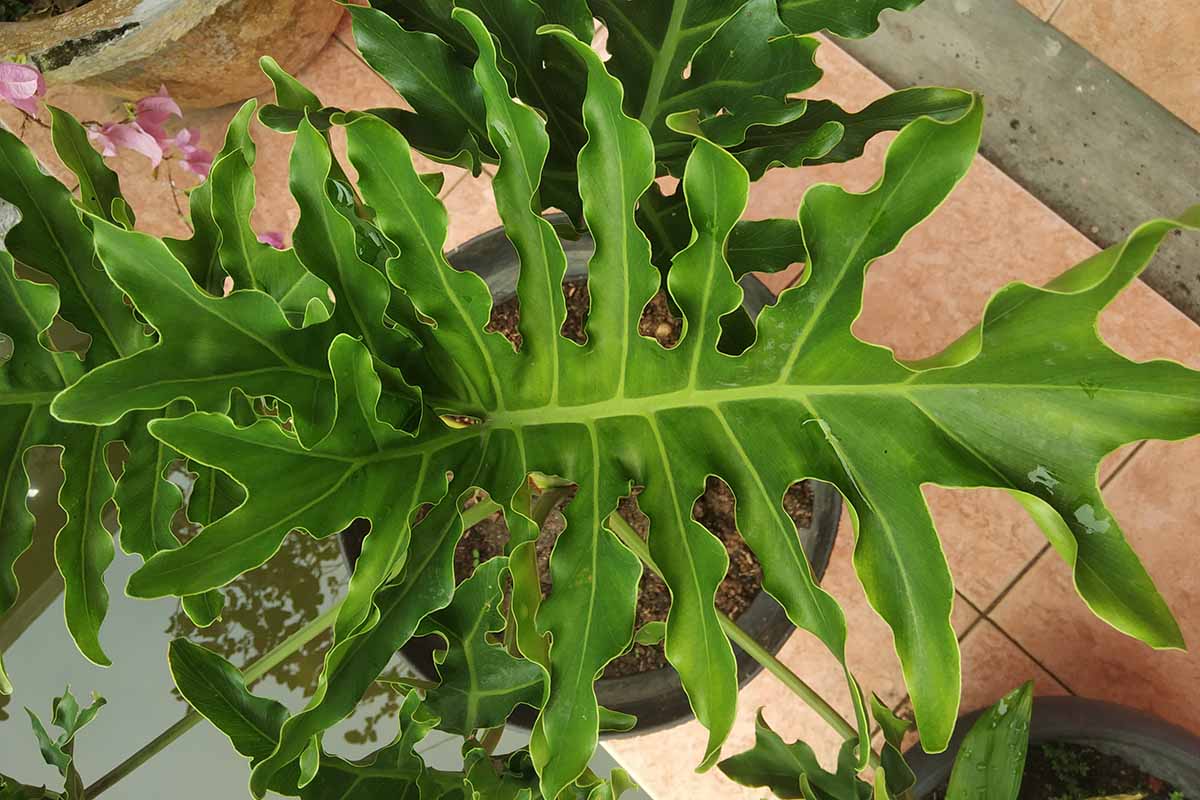
They’ll also flourish in the bright, indirect light that’s available in a sunroom, or any level of natural light available elsewhere indoors.
Just make sure the light they receive is indirect. Think: near a sunny window, but not in the direct path of strong afternoon sun rays.
Climate
The ideal temperature for these houseplants is between 70 and 85°F, but they’ll do okay as long as nighttime temperatures don’t drop below 55°F.
If you’ve accidentally left yours outside in a light frost, you may luck out. Sometimes they’ll survive overnight or for a few hours in temperatures that plummet to 36°F, but don’t press your luck.
Container Selection
Provide a container that has drainage holes, and that’s made of a lightweight material that retains moisture, like plastic, vinyl, or galvanized metal.
Unglazed clay pots dry out too quickly. And once the plants reach a decent size, most pots made of ceramic or sealed terra cotta are going to be too heavy to move around if you plan for the houseplants to spend the warm months outdoors.
Speaking of size, you don’t want to choose a pot that’s too big, either.
This is not the time to purchase a container with ”room to grow,” since T. bipinnatifidum prefers to be a little rootbound.
Instead, find a container that is about two inches wider than the diameter of the root ball, or the pot it’s growing in currently if it needs to move up a size.
Also outfit the planter with a saucer at the bottom to catch excess water. That way, you’ll be able to discard any excess that drains after watering, so the roots are never standing in water.
Soil
These plants aren’t fussy, but they do need a well-draining, rich growing medium.
While they require consistent moisture, they’ll languish if compacted soil gets waterlogged, which can prohibit the roots from drawing up water and nutrients to deliver to the rest of the plant.
The ideal is a light, fertile mix. I suggest combining potting soil, peat moss or coconut coir, and perlite in equal proportions.
Water
Only water when a moisture meter or a finger plunged into the soil informs you that the top two inches are dry.
Water thoroughly at the soil line, not from above the plant, so you don’t get any water on the foliage. Let the water drain completely, and discard the excess.
Fertilizer
This particular species will also appreciate regular applications of nitrogen-rich fertilizer, so it can keep producing those impressive leaves.
Dilute liquid fertilizer to half of the manufacturer’s recommended amount, and use it once a month.
Growing Tips
- To discourage root rot, never let the plants stand in water.
- Place T. bipinnatifidum away from direct sunlight so the leaves won’t be scorched.
- Limit size by keeping them in smaller pots, a max of 12 inches wide.
Pruning and Maintenance
If you want to trim away gangly aerial roots on a tree philodendron, that’s your call. They’ll grow just fine with them or without them.
There are a few beneficial maintenance chores to attend to if time allows.
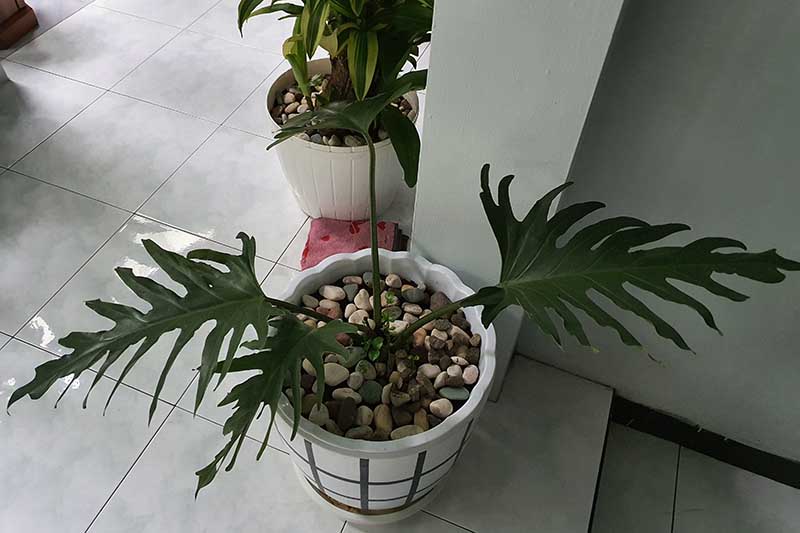
The first is keeping the leaves free of dust. Since they’re so big and they’re growing indoors the majority of the time, if not permanently, they’ll benefit from a quick wipe with a dry microfiber cloth every couple of weeks.
This will get the dust off so they can more readily photosynthesize, and they’ll look prettier, too.
If insect pests are a problem, you can also wipe the leaves with a warm, damp cloth, both the tops and the undersides, every month or so. This will rid the surfaces of any lurking eggs or webs.
It’s also a good idea to flush salts from the soil once every four or five months. They’ll build up with continued fertilizer use.
This process takes a while, but it’s low labor. Just water the soil thoroughly until you see water coming out of the drainage holes. Let it drain completely, discard the excess, and then complete two more rounds of watering, draining, and discarding.
If you’re taking advantage of being able to wheel these indoor plants outdoors in the warm months to let the sun and rain provide for their needs, you’ll need to maintain a set schedule so they don’t freeze.
They’ll need to be brought back inside before nighttime temperatures dip below 45°F, but take it slow if they’ve been exposed to bright light all summer and their new spot will be in a lower-light situation.
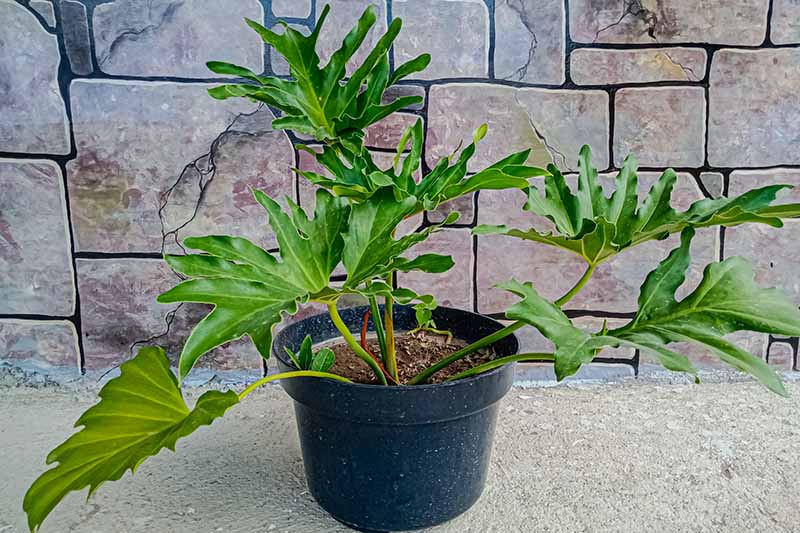
Starting a week or so ahead of the final move, gradually begin to reduce the amount of light they’re receiving, either with strategic shade cloth or by moving them into locations where there is less and less light.
This will help to keep the plants from suffering shock and dropping their leaves.
In the spring, reverse the procedure, gradually exposing the plants to increasing amounts of light before transitioning them to an outdoor spot that’s brighter, and completing the move once the chance of nighttime temperatures below 45°F has passed.
Also, this houseplant is likely to grow larger outside in the summer, so be sure to keep up with its nutrition needs by dutifully fertilizing, even if you don’t typically fertilize when it’s growing inside.
If your plant is becoming too large for its current container, you can unpot the plant and trim the roots to one-third of their current size to maintain a more compact plant.
Your plant may also need transplanting, especially if you’re aiming to let it grow ever-bigger. You can learn more about transplanting your tree philodendron in our guide.
Where to Buy
T. bipinnatifidum plants aren’t the most readily available type of tropical foliage plants that you’ll see at local greenhouses or big box stores – you’re much more likely to find the smaller, vining heart-leaf philodendron, P. hederaceum.
You can sometimes find a smaller cultivar called ‘Hope’ at home stores, but other specific cultivars, including the narrow-leaf ‘Tortum,’ are rarely labeled as such, nor are you likely to spot them available for purchase locally at nurseries.
But you can find the standard tree philodendron online, usually labeled as P. selloum. Plants are available in #3 containers from Nature Hills Nursery.
Smaller plants have more green and less serration in the middle of their leaves, and the “fingers” aren’t as narrow as those that you’ll see on the mature plants.
This juvenile look may fool you into thinking this is not the plant you want.
But young tree philodendrons will develop the distinctive extra-long foliage with the rippled, narrow lobes that cut nearly to the center of the leaves as they get older.
Tree Philodendron in 10-Inch Pot
Tree philodendrons in 10-inch decorative pots are available from Costa Farms via Home Depot.
Managing Pests and Disease
When you stick with growing them indoors, you can mostly avoid insect pests and disease on tree philodendrons.
The best preventive measures include wiping the leaves often with a damp cloth, including the undersides; making sure the plants have plenty of space for air circulation; and never overwatering or leaving the roots to stand in soggy soil or saucers full of water.
Occasionally, certain pests or diseases will strike anyhow. The main insect offenders are mealybugs, scale, and spider mites, and the two most likely diseases are bacterial leaf spot and root rot.
Learn more about recognizing, treating, and preventing each of these houseplant threats in the pest and disease section of our philodendron guide.
Best Uses
Use the impressive size of both the leaves and the plants to your advantage when you choose where to place T. bipinnatifidum.

While these plants are too big and the pots are often too heavy to place on a bookcase or most windowsills, one can easily anchor the decor in any larger space where it can rest on the floor.
A few attractive options include setting it where the deep green foliage will pop against a brightly painted wall, or using it to lift spirits in a poorly lit foyer or mudroom, or other lackluster spaces including low-light dens, rec rooms, or so-called “man caves.”
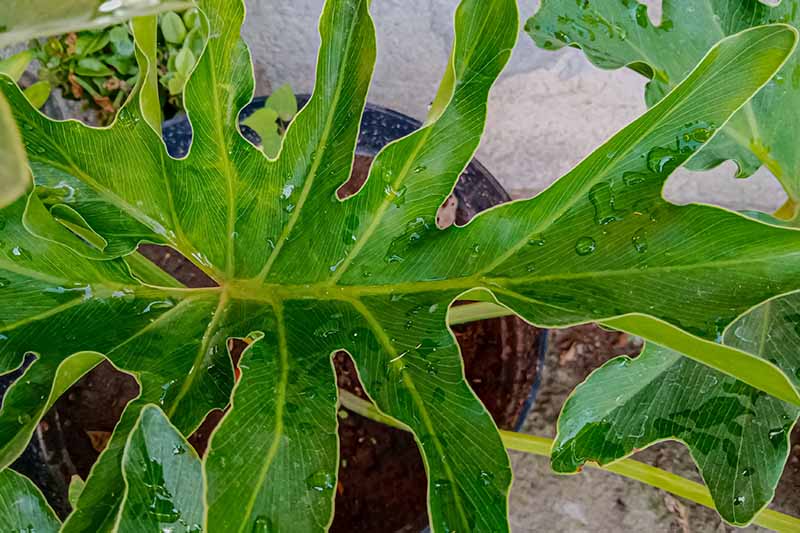
Place one large plant below a hanging basket of one of its trailing philodendron relatives, or use one to anchor a collection of shorter, colorful tropical plants like anthuriums.
With the ability to withstand both bright and low light, this species is also a strong design choice for shady patios or light-filled gazebos in the warm months, or for setting by the pool or a pond for added tropical allure.
Just make sure to include a wheeled cart below any of the larger containers you plan to roll around to use in different aspects of your decor.
And anywhere it grows, remember that T. bipinnatifidum needs plenty of space to spread its leaves.
Quick Reference Growing Guide
| Plant Type: | Tropical herbaceous perennial | Foliage Color: | Green |
| Native to: | Argentina, Bolivia, Brazil, Paraguay | Maintenance: | Low |
| Hardiness (USDA Zone): | 10-13 (outdoors) | Tolerance: | Drought, low light |
| Exposure: | Low to bright indirect light (indoors), partial shade (outdoors) | Soil Type: | Rich, sandy loam or potting mix |
| Planting Depth: | Cover roots by 1 inch | Soil pH: | 5.0-6.0 |
| Height: | 8-10 feet (indoors/potted), 15 feet+ (outdoors) | Soil Drainage: | Well-draining |
| Spread: | 6 feet+ | Family: | Araceae |
| Water Needs: | Moderate | Genus: | Thaumatophyllum (formerly Philodendron) |
| Common Pests and Disease: | Mealybugs, scale, spider mites; Bacterial leaf spot, root rot | Species: | Bipinnatifidum (formerly bipinnatifidum/selloum) |
Rainforest Foliage in Your Living Room
Some houseplants that make a bold statement only succeed with lots of fussy tending. But the tree philodendron provides a dramatic statement without requiring too much in terms of care.
That’s a win-win!
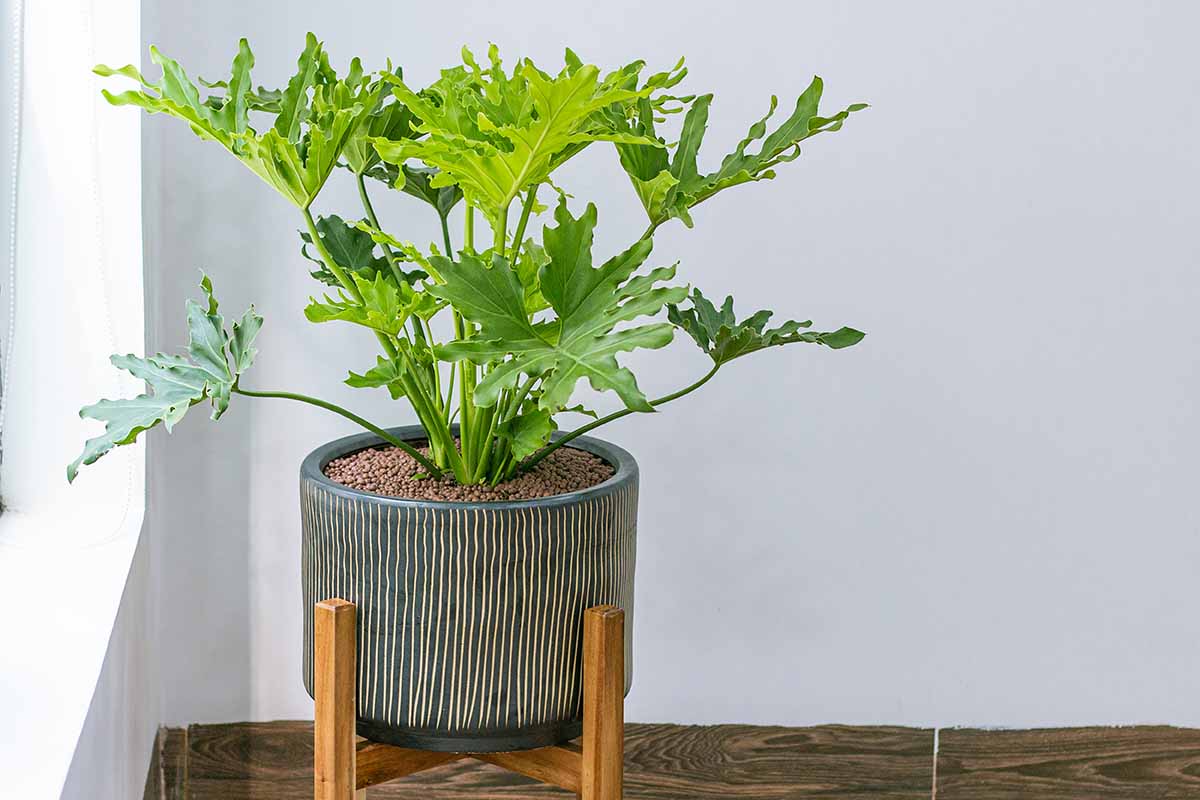
Do you have experience growing this tropical plant indoors, or splitting its time between summers outside and winters inside? If you have tips or questions to share, take a few seconds to add your input in the comments section below.
And if you want more insider tips on indoor gardening, check out these houseplant guides next:
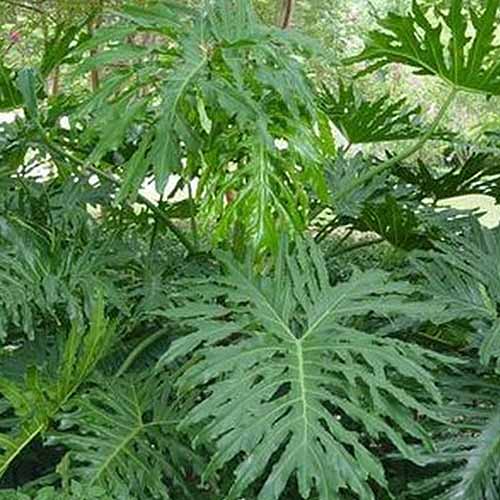

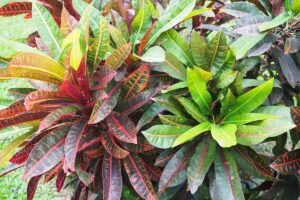
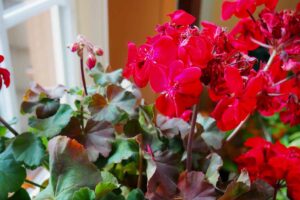

My tree philodendron is wilting. I just repotted it but do I cover the plant’s trunk?
Hello Janice duffy. As long as the pot is just a size or at the most two sizes larger than the original, and you’ve got drainage holes in there and well-draining soil, your plant should be able to make a comeback. I wouldn’t cover the trunk, though. Just plant your tree philodendron so it’s even with the soil line. And make sure to leave bout an inch of space between the top of the soil and the rim of the pot, so you won’t wash away the soil when you give your houseplant a drink of water. Good luck and… Read more »